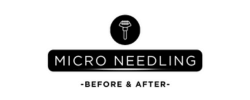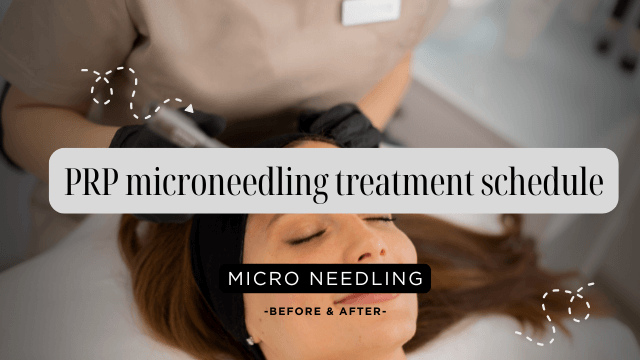As someone who’s always been passionate about skincare, I’ve explored countless treatments over the years. Today, I want to share my experience with a revolutionary procedure that has transformed not just my skin, but my confidence too: PRP microneedling. If you’re considering this treatment, you probably have questions about what to expect, particularly regarding the PRP microneedling treatment schedule and how many PRP microneedling sessions you might need. Let me walk you through it all.
My Journey to PRP Microneedling
Like many of you, I struggled with skin issues that seemed resistant to creams, serums, and over-the-counter remedies. After extensive research and consultations with dermatologists, I decided to try PRP microneedling. This procedure combines the collagen-stimulating effects of microneedling with the regenerative power of platelet-rich plasma (PRP) derived from your own blood.
Understanding the PRP Microneedling Treatment Schedule
When I first inquired about this treatment, my biggest question was about timing. How often would I need to come in? How many appointments should I expect? Here’s what I learned and experienced firsthand.
The Initial Consultation
My journey began with a thorough consultation. The dermatologist assessed my skin concerns, medical history, and goals. This initial appointment is crucial for determining your personalized PRP microneedling treatment schedule. Don’t skip this step!
The Recommended Sequence
For most concerns like fine lines, acne scars, or overall skin rejuvenation, professionals typically recommend 3-4 PRP microneedling sessions spaced about 4-6 weeks apart. This spacing is critical as it:
- Allows your skin to heal completely between treatments
- Gives time for collagen production to ramp up
- Enables your provider to assess progress and adjust as needed
I followed this schedule precisely, and I’m grateful I did. The time between sessions was vital for my skin to regenerate and for me to observe incremental improvements.
My Experience Through Multiple PRP Microneedling Sessions
Session #1: The Foundation
My first treatment was both exciting and slightly nerve-wracking! After having my blood drawn and processed to extract the PRP, the microneedling began. I experienced mild discomfort despite the numbing cream, but it was manageable. Immediate after-effects included redness and a feeling similar to a sunburn.
The healing process took about 5 days, with the first 48 hours being the most noticeable. I followed my provider’s aftercare instructions religiously, avoiding direct sun exposure and applying only the recommended products.
Sessions #2 and #3: Building Results
With each subsequent treatment in my PRP microneedling treatment schedule, I noticed the procedure became more comfortable as I knew what to expect. By my third session, I could already see significant improvements in skin texture and a reduction in my acne scarring.
The Maintenance Phase
After completing my initial series of PRP microneedling sessions, my dermatologist recommended maintenance treatments every 6-12 months. This schedule helps preserve and enhance the results, especially as our skin continues to age.
Factors That May Affect Your PRP Microneedling Treatment Schedule
It’s important to note that everyone’s skin is unique, and several factors might influence your personal treatment plan:
Severity of Concerns
For deeper scars or more pronounced signs of aging, you might require additional PRP microneedling sessions. Some of my friends needed 5-6 treatments rather than my 3-4.
Age and Skin Condition
Younger skin with more robust collagen production might respond more quickly, potentially requiring fewer sessions. Mature skin might benefit from more treatments or a slightly condensed schedule.
Health Factors
Certain health conditions or medications might necessitate adjustments to your PRP microneedling treatment schedule. Always discuss your complete medical history with your provider.
Tips for Maximizing Your PRP Microneedling Sessions
Through my experience, I’ve gathered some helpful advice:
- Consistency is key: Adhere to your recommended PRP microneedling treatment schedule for optimal results.
- Follow aftercare diligently: Protect your investment by carefully following all post-treatment instructions.
- Be patient: The most dramatic results often appear 2-3 months after your final session as collagen continues to build.
- Maintain healthy skin habits: Support your treatments with good skincare, proper hydration, and sun protection.
Is It Worth the Commitment?
After completing my PRP microneedling sessions, I can confidently say yes! The improvement in my skin’s texture, tone, and overall appearance has been remarkable. While the treatment requires an investment of time and money, the results have been worth every penny and minute spent.
For those considering this treatment, understanding the typical PRP microneedling treatment schedule helps set realistic expectations. Remember that this is not a one-and-done procedure but rather a progressive improvement with each session.
Have you tried PRP microneedling or are you considering starting your journey? I’d love to hear about your experiences or answer any questions about the PRP microneedling treatment schedule that I haven’t covered here. Our skin stories are all unique, but we can learn so much from sharing them with each other.

